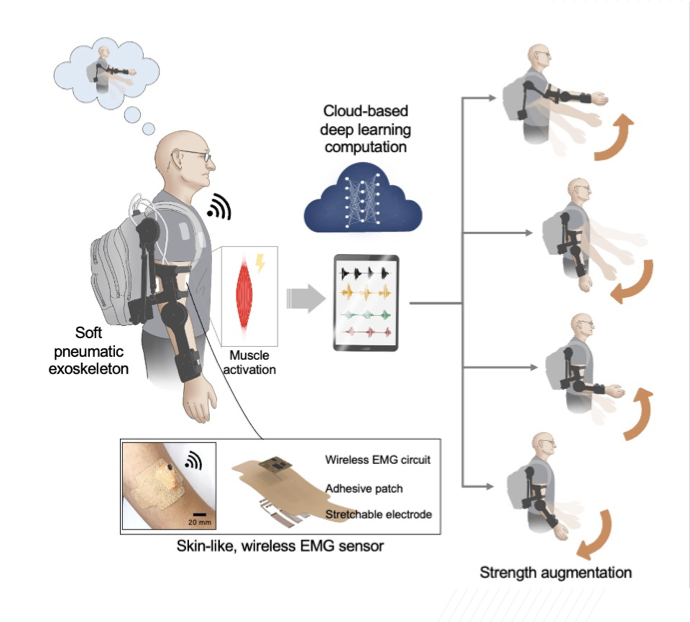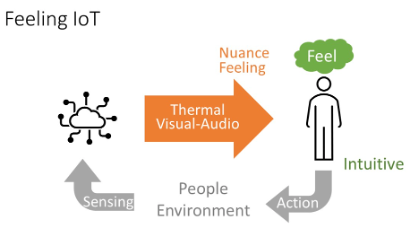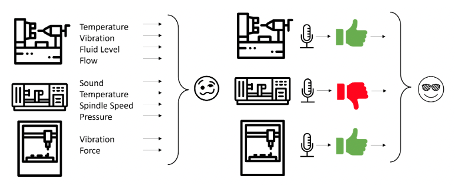Overview
The annual Student IoT Innovation Capacity Building Challenge is a CDAIT initiative to advance the development of innovation, applications, policy, and activities, broadly, in the area of Internet of Things (IoT) technologies and applications. CDAIT seeks to stimulate projects involving rapid response innovative/exploratory research, hardware/software projects, policy and applications, and efforts to advance ideas into prototyping and early commercialization phases.
Below is a short summary of the eleven research projects that have been part of the Student Challenge over the last three years.
2023 Challenge Projects
1st place: Verizon Connectivity Prize
Water-level Accessible Via Economical Satellites (WAVES)
The Georgia Tech Smart Sea Level Sensors (SSLS) project previously developed and deployed internet-connected water level sensors that require collocation with existing internet infrastructure, limiting possible deployment locations. Low-cost satellite constellations such as Swarm present a viable connectivity alternative, allowing sensors to upload data from anywhere. For this project, the WAVES team redesigned the Smart Sea Level Sensor’s water level sensor to integrate with a Swarm M138 satellite gateway, allowing the system to upload water level data and system metadata multiple times a day from anywhere in the world.
Website: https://www.sealevelsensors.org/

1st Place: Policy/Civic Engagement
Physioconnect: Cloud-interfaced Wearable Device Ecosystem for Cardiovascular Characterization and Remote, Long-term Postpartum Monitoring
In the United States, the sole postpartum visit that is currently part of standard postpartum treatment occurs between 4 and 6 weeks after child delivery, which is too late to diagnose cardiomyopathy, heart failure, or hypertensive crisis. To begin to address the underlying inequalities in access to healthcare infrastructure producing this disparity, we apply a comprehensive multifaceted framework to a platform for real-time delivery of key maternal cardiovascular metrics to patients and their clinicians using modern cloud and mobile application technology in conjunction with skin-like wearable devices with clinic-grade sensing ability. With the intersection of cardiovascular and socioeconomic factors at the center of postpartum risk assessment, an accessible, accurate, and continuous monitoring system would be a central component of a broader proactive approach for mitigating the rising postpartum death in the United States.
Website: https://sites.gatech.edu/physioconnect/

1st place: IoT Innovation
Soft Upper-Extremity Robotics with Stretchable Artificial Skin Electronics for Deep Learning-Enabled Human Strength Augmentation
The team developed a soft upper-extremity exoskeleton created for the purpose of human strength augmentation that was built upon a new class of technologies, including stretchable artificial skin electronics, soft actuators, and deep-learning algorithms. To create the soft sensors and electronics needed in a rapid and reliable manner, they implemented nanomaterial printing methods. These sensors and actuators were then be integrated with a soft robotic garment, and deep-learning algorithms offer automatic, real-time identification and classification of the user’s movement for facilitating and amplifying the intended motion.
Website: https://www.bio-translational-exoskeleton.com/

Development of an Immersive System for Effective Training in Industrial Laser Scanning
ScannerVR is a simulation tool enabling instructors and trainees to understand the complexities of the laser scanning process. Trainees and instructors can leverage the power of VR to enable the instruction of complex tasks. The trainee puts on the headset and is then greeted by instructions on how to use ScannerVR. Movement controls and Interaction controls are explained along with the objectives of the experience. The trainee is then dropped into the virtual industrial environment, where they can immerse themselves in the scanning experience. The instructor can monitor the interactions while the trainee uses the headset to accomplish.
Website: https://abhishekshankar.gitbook.io/scannervr/

Thermal Display for Augmenting Emotional Experience
Conventional IoT devices rely on visual displays to deliver information. Yet, multimodal outputs beyond the visual offer under-explored possibilities for information displays. For example, physical warmth has been shown to increase social warmth and offers a deep sense of comfort and coziness. The team has designed and implemented a thermal display, and developed and exhibited Thermal Music as an example of using it to express feeling through heat. Plans are to miniaturize the thermal display and extend the feeling communication beyond music (e.g., presenting nuanced information from IoT devices, sharing the state of people and the environment, and encouraging a specific action by influencing feelings).

2022 Student Projects
1st Place: Commercialization
Intelligent Acoustic Monitoring at the Edge
This project is a low-cost, easy-to-implement application that uses a microphone to learn what a machine typically sounds like and alerts users when anomalous sounds are identified. The application makes use of unsupervised machine learning to automate all stages of deployment including the determination of machine state, learning the typical sound of the machine, and setting the threshold for classifying new sounds.

1st Place: Technology Development
Soft Stethoscope Patch (SSP) for Multi-patient Pulmonary Diagnosis
This project consists of three soft stethoscope patches, on the chest, back right and left lower lobes, connect to a HIPAA compliant application with integrated machine learning algorithms to classify abnormalities and send real time severe event notifications to a caregiver. This system provides accurate, continuous, and timely cardiopulmonary information on patients requiring accurate multi-auscultation.

2021 Student Projects
1st Place:
Wearable Stress Monitoring System
This project, a novel IoT system that consists of a soft sternal patch with optimized mechanics that wirelessly monitor minute mechanical vibrations on the chest caused by each heartbeat, and an android app that conducts real time signal processing and machine learning to identify markers of cognitive stress.

2nd Place
Elbowroom
The objective of the Elbowroom project was to build a novel, Automated Passenger Counter (APC) system to offer transit agencies, especially smaller organizations, access to rider occupancy data. The team chose to use Bluetooth and WiFi sensors as their main data source due to their low price.

3rd Place
StartProto
There were a number of inherent problems in running a makerspace, including safety assurance, machine time allocation, and data collection. The prototype IoT device provides intelligent access control to tools based on training levels, and collects user and machine data through ID scanners and current sensors.

4th Place
Fridge-Freshness
Fridge mounted IoT system that tracks the shelf-life of stored foods, and alert users about expiring items. The prototype is designed as an external device attached to the fridge door. A mobile app on smartphones operates as a secondary platform for notifying users about expiration dates and food lookup. Users can use an Alexa Skill to add new food items into the system.

